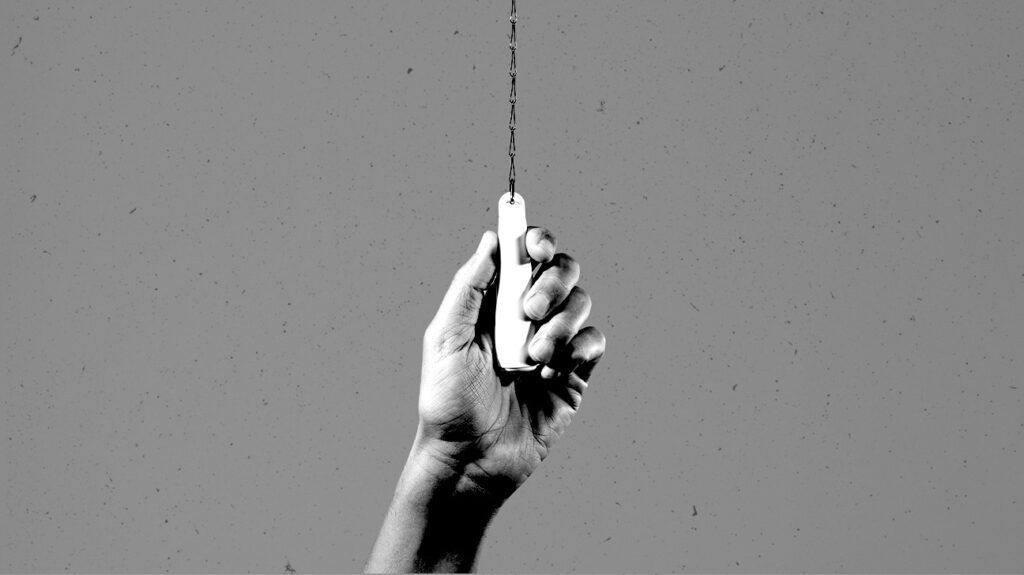Doctors may use two classes of medications as first-line treatments for overactive bladder (OAB): Antimuscarinics and beta-3 agonists. These medications can help manage the symptoms associated with OAB.
OAB refers to a group of urinary symptoms, including a sudden, uncontrollable, and frequent urge to urinate. Some people with OAB may also leak urine when experiencing this urge.

A
According to the American Urological Association (AUA), antimuscarinics and beta-3 agonists work by relaxing the detrusor muscle, a large muscle in the bladder wall.
The detrusor muscle relaxes to allow the bladder to fill with urine and contracts to release urine from the body. In OAB, the detrusor muscle contracts too frequently, resulting in a frequent and urgent need to urinate.
Relaxing this muscle increases the amount of urine the bladder can hold and prevents the bladder from contracting when it is not yet full.
A
The following table lists the different types of anti-muscarinic drugs, alongside their dosages:
| Drug (oral) | Dose in milligrams (mg) |
|---|---|
| Oxybutynin | 5 mg to 15 mg daily |
| Solifenacin | 5 mg to 10 mg daily |
| Darifenacin | 7.5mg to 15 mg daily |
| Tolterodine | 2 mg twice daily |
| Trospium | 20 mg twice daily |
| Fesoterodine | 4 mg to 8 mg once daily |
These medications can cause side effects such as dry mouth and constipation. A 2020 meta-analysis found that Oxybutynin, Darifenacin, and Tolterodine were associated with a significant decrease in cognitive function in older adults. Before taking any medication, it is advisable to discuss the risks and side effects with a doctor.
Like antimuscarinic agents, beta-3 agonists
The primary beta-3 agonist that doctors may prescribe to treat OAB is mirabegron. The daily dosage for OAB is
The most common side effects of mirabegron include:
- high blood pressure (hypertension)
- nasopharyngitis
- urinary tract infection (UTI)
- headache
Mirabegron may cause serious side effects, such as an allergic reaction, in some people. The following symptoms of an allergic reaction require emergency medical treatment:
- swelling of the face, lips, tongue, or throat
- difficulty breathing or swallowing
- hives, or itchy skin rash
- urinary side effects, such as difficult, painful, or frequent urination
According to a
- are taking certain antiarrhythmic medications, such as thioridazine
- are taking tricyclic antidepressants, such as imipramine or desipramine
- have severely impaired liver or kidney function
The oxybutynin transdermal patch is the only OTC medication that is FDA approved to treat OAB.
According to the drug’s prescribing information, individuals using OTC oxybutynin patches may apply a 3.9 mg oxybutynin patch once every 4 days.
Can I take OTC medication for OAB with prescribed medications?
People should use caution when using oxybutynin patches alongside other antimuscarinic drugs, as doing so can
- dry mouth
- constipation
- urinary retention
When purchasing OTC oxybutynin, people should always inform the pharmacist of any other medications, vitamins, or supplements they are taking.
The following information highlights some home remedies that people can use alongside medications to treat OAB.
Avoiding diuretics
Diuretics are substances that cause the kidneys to produce more urine. Caffeine and alcohol are natural diuretics. People with OAB should avoid beverages containing caffeine and alcohol.
However, if people are taking diuretics prescribed for other conditions, such as fluid retention or heart failure, they should not stop taking these medications without talking with their prescribing doctor.
Limiting foods and beverages that can cause bladder irritation
Certain foods and beverages can irritate the bladder, triggering the urge to urinate. Examples include:
- carbonated drinks
- some citrus fruits
- tomatoes, and tomato-based foods
- some spicy foods
- milk and dark chocolate
Keeping a bladder diary
Keeping a daily bladder diary can help a person identify factors that may trigger or worsen their OAB, including:
- the number of trips the person makes to the bathroom during the day and at night
- the amount of fluid the person consumes
- the foods and beverages the person consumes
Phone apps are also available, and a person may find them simple and convenient to use.
If a person identifies foods or beverages that appear to trigger their OAB symptoms, they can eliminate them from their diet one at a time to see if their symptoms improve.
Double voiding
Double voiding refers to emptying the bladder twice during a single trip to the bathroom to ensure it is empty. It involves urinating once and then waiting a few seconds before trying to empty the bladder again.
Delayed voiding
Delayed voiding is when people delay their bathroom visits when they feel the urge to urinate. Initially, a person may wait a few minutes before going to the bathroom. Over time, they may be able to wait 2 to 3 hours at a time.
A person should only practice delayed voiding if their healthcare professional recommends this as a treatment option. Some people find that delayed voiding worsens their OAB symptoms or leads to urine leakage.
Timed urination
With timed urination, a person visits the bathroom on a regular schedule rather than going when they feel the urge. This may result in people going to the bathroom even when they do not feel the need.
Timed urination aims to prevent urinary urgency and help individuals regain control of their bladder.
Exercises to relax the bladder muscle
The following exercises can help to relax the bladder muscle and alleviate OAB symptoms:
- Kegel exercises: These exercises involve tightening and strengthening the pelvic floor muscles, which are the muscles and connective tissues that support the bladder and surrounding organs.
- Quick flicks: An exercise that involves rapidly squeezing and relaxing the pelvic floor muscles when feeling the urge to urinate. Practicing and focusing on this exercise can help to control the urge to urinate.
- Biofeedback: A technique that helps people learn about and control their bladder function. It involves using sensors and electrodes to monitor the bladder and pelvic floor muscles during pelvic floor exercises. A computer then presents the feedback in the form of sounds and graphs.
People should contact a doctor if they experience symptoms of overactive bladder, such as:
- an urgent need to urinate more than eight times in 24 hours
- waking more than once per night to urinate
- urinary urgency with or without urine leakage
A doctor will work to diagnose the condition and recommend appropriate treatments and therapies.
People should also contact a doctor if they are taking medication for OAB and are not noticing any improvement in their symptoms. This may indicate that the doctor needs to reassess the dosage or consider a different medication.
OAB refers to a group of urinary symptoms, including a sudden, uncontrollable, and frequent urge to urinate. People with this condition may experience urinary urgency frequently throughout the day and may wake during the night to urinate. For some people, this urgency may result in urine leakage.
The two main classes of medication that doctors may use to treat OAB are antimuscarinic agents and beta-3 agonists. Both may cause side effects and using OTC oxybutyrin patches alongside a prescription OAB medication can increase the risk of these side effects.
Home remedies that people can try alongside drug treatments for OAB include limiting certain foods and beverages, keeping a bladder diary, and practicing pelvic floor exercises. Practices such as double voiding, delayed voiding, and timed urination may also help.

